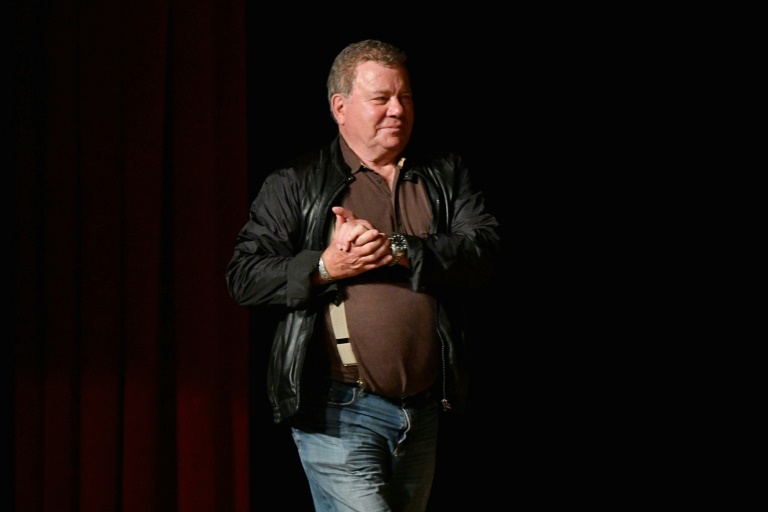“Star Trek” actor William Shatner is set to boldly go where no 90-year-old has gone before when he blasts off to space Wednesday on Blue Origin’s second crewed mission.
The Canadian — who will forever be known to the sci-fi show’s legion of “Trekkies” as Captain James Tiberius Kirk — will launch from the company’s West Texas base at 9 am (1400 GMT), after a day’s delay due to high winds.
He will be joined on the New Shepard rocket by Blue Origin executive Audrey Powers, Planet Labs co-founder Chris Boshuizen, and Glen de Vries, a co-founder of clinical research platform Medidata Solutions.
The crew’s roughly 11-minute hop beyond the Karman Line — 62 miles (100 kilometers) into the air, just beyond Earth’s atmosphere — and back down again with a parachute landing in the desert is a replay of Blue’s maiden human flight in July.
That trip, which included company owner Jeff Bezos of Amazon, was seen as a breakthrough moment for the nascent space tourism sector.
This time around, nearly all attention will be focused on Shatner, who at 90 will become the oldest-ever astronaut, despite an appearance that suggests a man who could be decades younger.
The intergalactic voyages of the “Star Trek” Enterprise ship, commanded by Captain Kirk, helped turn American attention to the stars as the US space program was in its infancy.
“Captain Kirk… represents ‘the final frontier’ perhaps more than anyone else for a couple different generations of people, in the US and worldwide,” screenwriter and ‘Trek” historian Marc Cushman told AFP.
Shatner, who’s also known for his roles as lawyer Denny Crane in “Boston Legal,” among many others, has spoken in the past about having a difficult relationship with “Star Trek” and its fan culture.
But in recent years, the actor has leaned into the fame brought about by his most famous role.
“It looks like there’s a great deal of curiosity in this fictional character, Captain Kirk,” he said in a video released by Blue Origin Tuesday. “Let’s go along with it and enjoy the ride.”
– Space tourism heating up –
For Blue Origin, meanwhile, a second mission in less than three months represents another step forward as it tries to establish itself as space tourism’s leading player.
Boshuizen and Vries will bring the company’s total number of paying customers to three — though prices haven’t been disclosed.
The competition is raging.
Virgin Galactic, which offers a similar experience of a few minutes’ weightlessness and a view of the Earth’s curvature from the cosmos, launched its founder Richard Branson in July, a few days before Bezos.
And in September, SpaceX sent four private citizens on a three-day trip whizzing around the planet — an altogether more ambitious, but also likely far more expensive endeavor.
“We’re just at the beginning — but how miraculous that beginning is, how extraordinary it is to be part of that beginning,” said Shatner in his video message.
For many space enthusiasts, Shatner’s voyage is a fitting coda for a pop culture phenomenon that inspired generations of astronauts, scientists and engineers.
The show has had a long-running association with NASA, whose scientists were sent early scripts to vet their accuracy, according to Cushman, the writer.
“Those scientists, as well as nearly everyone at those space agencies, were avid Star Trek watchers, and they well understood that the popularity of the series helped spark growing interest and funding for the space program,” he said.
Another mega-fan: Bezos himself.
Amazon’s Alexa system was said to be inspired by the conversational computer in Star Trek, and Bezos — wearing heavy makeup sporting an egg-shaped head — appeared in a cameo in the 2016 film “Star Trek Beyond”.









